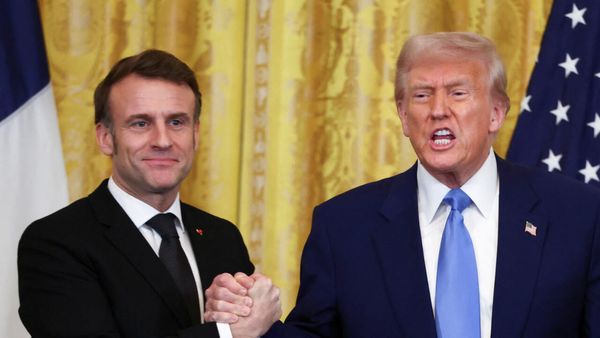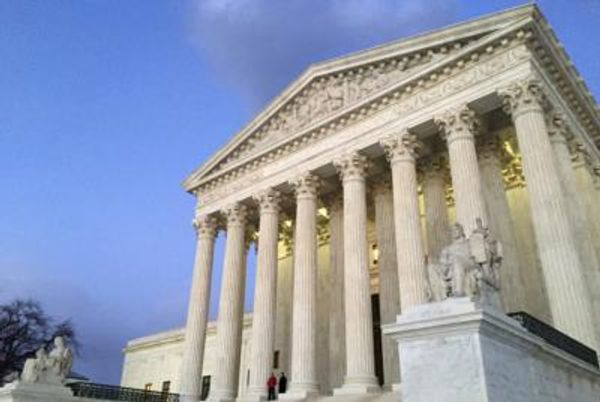General Motors (GM) and Ford sell millions of vehicles a year.
They also have financing arms, GM Financial and Ford Credit, which lend money to their customers and potential customers who want to buy their products.
The two car giants are therefore an important barometer for investors seeking to know if we are in recession or if the difficulties of households are getting worse while the financial markets are in panic mode in the face of record-breaking inflation.
Leaders of the two companies have just sent mixed signals. On the one hand they say they are preparing for an economic downturn and on the other GM and Ford ensure that the demand for their vehicles is not weakening.
“We’re very lean on inventories. We have an order bank that’s significant at over 300,000 units. Incentives are in the low single digits," Ford chief financial officer John Lawler said at Deutsche Bank's annual automotive conference on June 15.
"So it’s a completely different environment heading into what could be a potential recession than anything I’ve seen in the past. We’ve modeled it through. We know what we need to do."
'We're Going in with A Really, Really Strong Hand'
In the months leading up to the 2008 financial crisis followed in 2009 by the bankruptcy of GM and Chrysler, automakers had found themselves with colossal inventories and were offering steep discounts to liquidate those stocks.
Currently, the situation is rather favorable: order books are full, stocks are low, which causes long delivery times. Automakers have even had to increase their prices, especially for SUVs and pickups/trucks, to preserve their margins in the face of supply chain disruptions caused by the Covid-19 pandemic, the shortage of microchips and soaring prices raw materials.
“Anytime you go through a business cycle, the No. 1 thing you can desire is to go in from a position of strength," GM CFO Paul Jacobson at the same conference. “The reality is, we’re going in with a really, really strong hand.”
Jacobson reaffirmed the company's guidance of between $13 billion and $15 billion in operating profits for this year.
The Federal Reserve raised, on June 15, its key rates by three-quarters of a percentage point, or 0.75 percentage point, the biggest increase since 1994, in an attempt to control higher-than-expected inflation.
The central bank also anticipates weaker economic growth than expected this year in the United States, at 1.7%, against 2.8% previously. It expects the unemployment rate to be higher than expected at 3.7%, against 3.5% previously.
These pessimistic forecasts do not yet affect GM and Ford, which say they have not yet seen any signs of weakening demand.
"And trust me, I'm looking for it ... every day," said Jacobson. "What I’m stressing to the organization is the need to be nimble and agile. We obviously have long-term investments that we have to make. We have short-term targets that we have to hit. And in order to respond to this rapidly changing environment, we’ve got to be ready to act."
How Will Auto Buyers React to Rising Rates?
The executive said average transaction prices remaining high and the fact that vehicle inventories have remained flat: “That tells me that the vehicles are still moving, and that’s probably the No. 1 thing that I’m looking at.”
There is, however, a point which calls for caution. These are the potential defaults of consumers on their car loan. Indeed, Lawler said Ford Credit is starting to see delinquencies creep up.
“We’re looking for every indication and every data point we can to get a read on where the consumer is, where they’re headed, given everything that we see out there-- the inflationary pressures, the economic issues, etc.," he said. "We are seeing some headwinds there, a little bit, when it comes to delinquencies, as maybe a leading indicator.”
The rise in rates by the Fed, however, worries experts, who point out that it will be difficult to explain to consumers accustomed to very low interest rates that they have increased.
The average annual percentage rate, or APR, for new vehicles rose to 5.1% last month, according yo Edmunds.com This is the highest level since the start of the pandemic. Average new and used monthly payments --$656 and $546, respectively -- are at the highest levels the site has on record.
"Interest rates have played a leading role in shaping car buying and car sales over the last decade," Edmunds analyst Jessica Caldwell said in an emailed statement. "Zero percent financing has been such a popular incentive that it’s helped automakers get out of tricky situations by currying favor with consumers."
"Lower interest rates have historically been relied upon by car shoppers – particularly new car shoppers – to get into bigger vehicles with more options; and until recently, interest rates have been a bit of a cushion for consumers making car purchases amid elevated prices, high demand and limited inventory."
Caldwell added that:
"As Fed rate hikes continue, automakers will find themselves in a bit of a difficult position because lower interest rates will be a costlier marketing incentive at a time when consumers will be more reliant on lower interest rates to combat higher prices."







